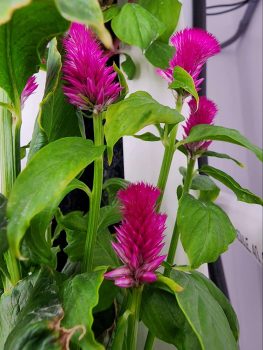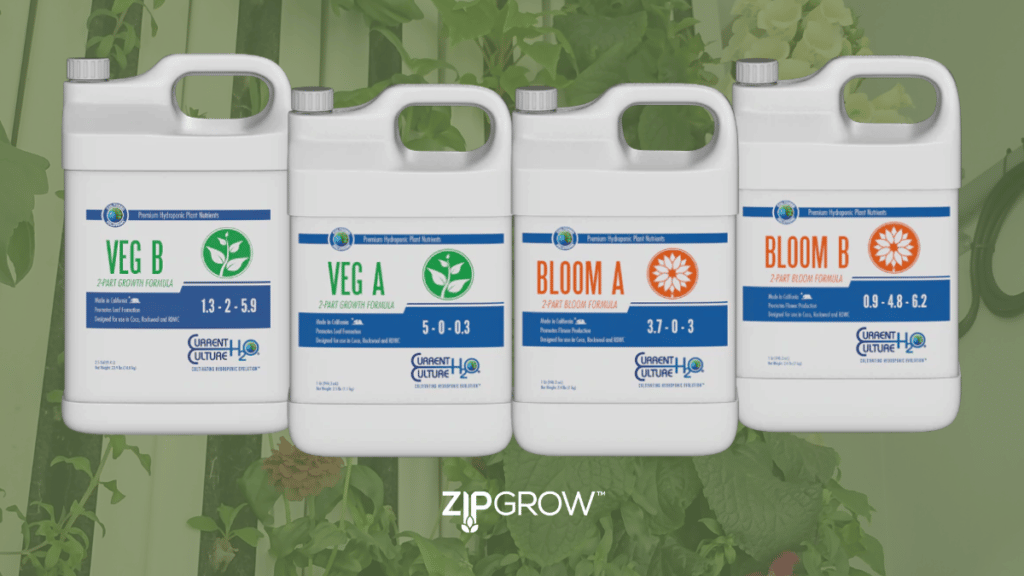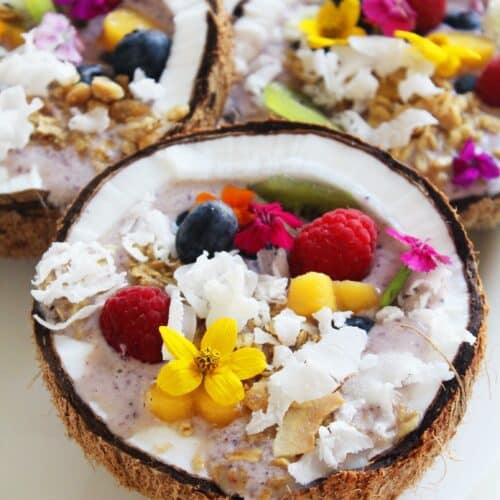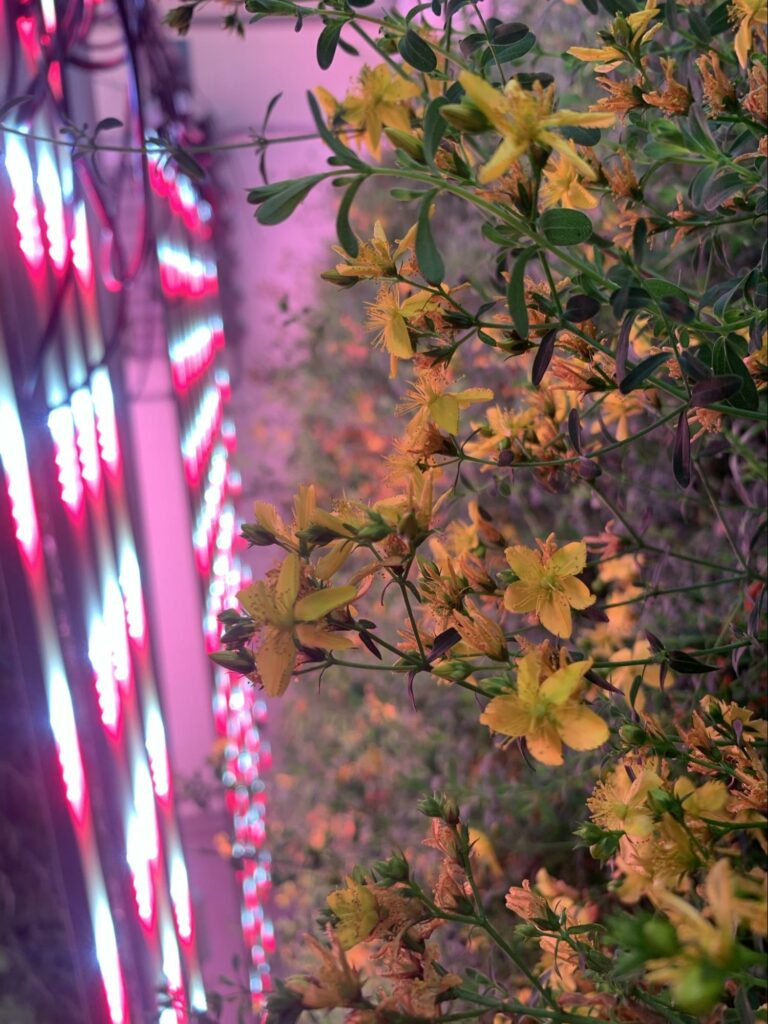Growing Hydroponic Flowers
Flower Power in Hydroponic Towers
Growing Hydroponic Flowers | ZipGrow |
Most types of flowers can be grown hydroponically. Essentially the elements that they would typically get from the earth and sun can be replaced in an indoor farm or a home system like the ZipGarden. There are no seasons with indoor hydroponics, so you can enjoy a bounty of blossoms all year long. It’s a great way to brighten winter days or kick-start your spring season. LED lights replicate sun-shiny days, and the perfect dose of nutrients will give you the best buds, blooms, and abundant crops. Many flowers are edible too, so you can munch away on them with your leafy greens and hydroponic herb bounties!
It’s been flower power in our ZipGrow Towers at the research ZipFarm this winter.
We have successfully trialed these flowers at a range of 1.4 EC and 6.2 pH.
Zinnia Elegans – Zinnias
Native to Mexico, Zinna Elegans have solitary flower heads about 5 cm across. There are also giant forms with flower heads up to 15 cm in diameter.
The flower colors range from white and cream to pinks, reds, and purples, to green, yellow, apricot, orange, salmon, and bronze. Some are striped, speckled, or bicolored. There are 20 species and more than 100 cultivars of zinnia.
A common threat to these flowers is Powdery mildew, so be sure to check for signs and take steps to control this.
Zinnia’s are like a gift that keeps on giving; the more you cut them, the more they return. They are fast-growing, especially with hydroponics, so they make an excellent starter flower for newbies.
Digitails Purpurea- Foxglove
These gorgeous elongated clusters of flowers are in the plantain familyPlantaginaceae, but don’t let their beauty deceive you. The entire plant is poisonous to humans and some animals and can be fatal if ingested due to the presence of the cardiac glycoside digitoxin. We don’t recommend these if you are growing at home and have pets or young children.
They bloom in four key color types; a white flower with purple spots; an albino flower with yellow spots; a light purple flower, and a dark purple flower.
Foxgloves are tall and can produce up to 75 flowers, releasing up to two million seeds. They grow quickly from seed, so you can transplant them to your hydroponic Towers in no time. For continuous bloom, cut the flower spikes back when 3/4 of the blooms have faded. Cutting off the tops of the spikes can encourage new flushes of growth.
 Celosia
Celosia

Commonly known as woolflowers, celosia is a small genus of ornamental plants in the amaranth family. The flowers bloom in vivid red, orange, purple, yellow, and cream colors.
In the variety celosia argentea, the leaves are edible and are traditional fare as a leaf vegetable in Central and West Africa. Along with their stems, they can be boiled or steamed and eaten as a side dish or combined with other vegetables.
Nutritionally, celosia compares well to other leafy greens and contains protein, calcium, iron, phosphorus, and vitamins A and C..
Try some in a winter soup or stew!
 Centaurea Cyanus- Cornflower or Bachelor’s Button
Centaurea Cyanus- Cornflower or Bachelor’s Button
In the past, this flower often grew as a weed in cornfields hence its name; it’s now unfortunately endangered due to the overuse of pesticides and herbicides in traditional farming.
The flowers are most commonly an intense blue color and arranged in 1.5–3 cm diameter flowerheads, with a ring of a few large, spreading ray florets surrounding a central cluster of disc florets.
Centaurea cyanus is generally not very susceptible to pests and plant diseases, so it’s another excellent option for beginners and hydroponic home hobbyists.
The flowers can be eaten raw, dried, or cooked. Dried petals are used (mostly for added color) in foods, including spices, salads, or desserts for garnishing. Dried petals can also be used in teas and other beverages.
They will produce more blooms and grow a bigger stem if you cut them back up to their third leaves. These flowers flourish within the pH range of 5.5-7.0.
Spathiphyllum – Peace Lilies or Spath
Native to tropical regions of the Americas and southeastern Asia, they are evergreen herbaceous plants with large leaves 12–65 cm long and 3–25 cm broad.
The plant is easy to care for, and they don’t need large amounts of light or water to survive. They are a good one to try if you want to grow hydroponically without supplemental lighting.
Peace lilies are far more tolerant of underwatering than overwatering, so if you are growing them with other crops on the same dosing schedule, you need to be aware of that.
You won’t be able to eat the flowers or leaves on this one, as it’s mildly toxic to humans and other animals when ingested.
Fungus Gnats and mealybugs are the most common threat when grown indoors, so check often for signs of infestation.
 Tagetes lucida – Mexican Marigold
Tagetes lucida – Mexican Marigold
More commonly known as Mexican Marigold or Mexican Tarragon, It is used as a medicinal plant and culinary herb.
The plant may be fairly upright, depending on the variety, while other forms appear bushy with many unbranching stems. It bears clusters of small golden yellow flower heads.
Know before you grow! Not all marigolds are edible, so if you plan to eat them, be more conscious of the variety you are planting.
The leaves of Mexican marigolds have an anise-like flavor and can be used as a tarragon substitute for flavoring soups and sauces. The colorful yellow flowers are edible, too, and will brighten your salads and desserts.
Mexican marigold does not have high nutrient requirements as long as the acidity is not too strong and the pH value is at least 6.
Antirrhinum – Snapdragon or Dog Flowers
Snap snap snap- if you have ever played with the head of a snapdragon flower, then you’ll know where its common name originates.
They thrive in cooler temperatures, so they would work well in ZipGrow Towers in a greenhouse setting or with other cool-minded crops in a controlled environment. Deadheading is essential to help them continuously produce beautiful flowers.
They are a fussy neighbor and susceptible to ethylene, so you’ll want to keep them away from other vegetables or fruit that you may be growing that are high in this gas, such as peppers and tomatoes.
Snapdragons love to be watered regularly; they need six to eight hours of daily sunlight. They are a perfect candidate to grow indoors hydroponically and thrive in this setting.
 Sunflower – Bring the Sunshine Indoors!
Sunflower – Bring the Sunshine Indoors!
We challenge you to look at a sunflower and not smile; they always bring great joy to everyone.
Typically the best crops for ZipGrow Towers are small-stature crops, but we threw this crop into the mix for fun. They grew so healthy and robust and exceeded all our expectations.
Commonly grown as a crop for its edible oily seeds, it’s not only seeds that can be harvested for food. Did you know that you can also consume the buds of plants and the petals of mature blooms? While you can technically eat the leaves of full-grown flowers, they are pretty tough and woody, so you might want to stick to your fresh leafy green mix and toss the petals on for color!
You can also start sunflowers indoors in your hydroponic system and then move them outside when the weather warms up; you’ll get a head start on your growing season!
We wonder – when you grow a sunflower indoors does it become an LED flower?
Give Your Buds a Boost

Whether growing hydroponically at home or in a commercial setting, our grow team recommends using nutrients Veg A/ Veg B and Bloom A/ Bloom B from our partner Current Culture H20 to get amazing results.
Use Veg first to get the plants established and make sure they have sturdy stems, followed by Bloom products to promote more nutrients in the flowers themselves for bigger, healthier flower heads. The plants will receive the minerals needed in ideal ratios to ensure optimal uptake of the nutrient solution.
The Floriculture Industry
The ornamental horticulture sector includes floriculture (primarily cut flowers and potted plants), nursery, Christmas tree, and turf sod industries. Floriculture makes up the largest sub-sector of ornamentals.
Cut flowers were the crop that led to the United States’ greenhouse industry, and most commercial cut flowers are cultivated in hydroponic or soilless systems. Chances are that you have bought cut flowers that were hydroponically grown and didn’t even know it!
The market for selling cut flowers in the U.S. is enormous and estimated to bring in a whopping $1.83 billion in sales each year.
As for imports, most flowers sold in the United States come from Ecuador, Colombia, Kenya, and the Netherlands, which is at the heart of the global trade in cut flowers and in 2022, exported $4.01B.
To Market to Market

If you are a commercial hydroponic grower, consider adding florals to your portfolio of fresh crops. Having them as your core crop may not be viable, and you should pilot your efforts first for the most optimal pH and EC levels to get the biggest production. Also, consider your buyer; if you have a B2B operation where you are selling to restaurateurs and chefs, edible flowers such as nasturtiums or violas can be a great return on your investment and are often in demand in the fine food world. Try a Tower or two first and provide taste and quality tests to your buyers. They will be impressed with the flavor intensity and color they can add to a plate.


One of the challenges in the near future will be the sustainable production of medicinal plants due to the negative impact of climate change and lack of arable land, so growing flowering plants and herbs that have medicinal benefits, like chamomile St.John Wort, maybe something you also want to investigate demand for in your region.

Original Article: https://zipgrow.com/flower-power-in-hydroponic-towers/
The post Growing Hydroponic Flowers appeared first on GROZINE.



